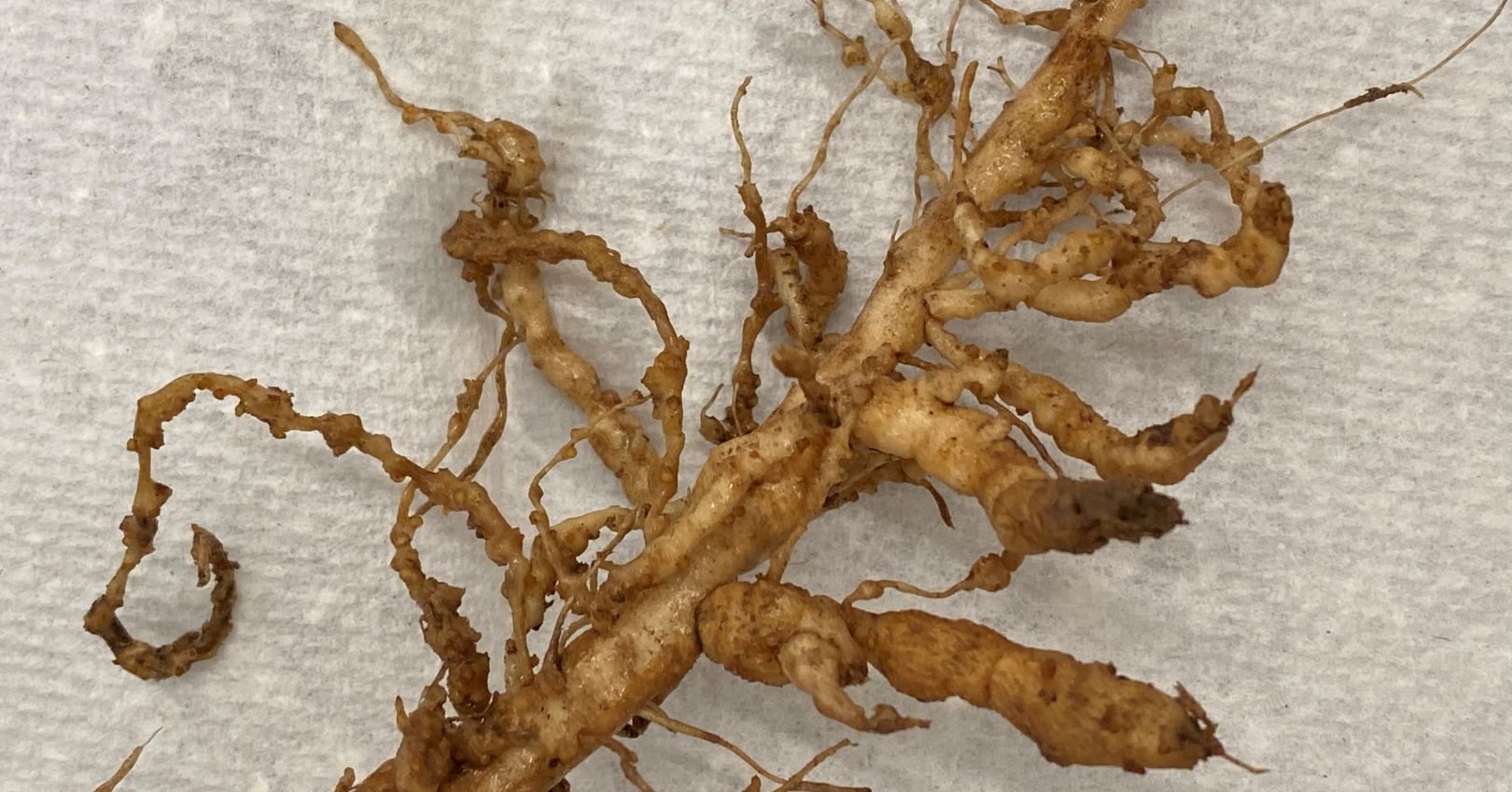Root-knot Nematodes

Root-knot nematodes are microscopic roundworms. Juveniles and male nematodes are worm-like whereas female nematodes are lemon-shaped. There are many species. For vegetables, the most important species in Utah are Meloidogyne hapla and Meloidogyne incognita.
Symptoms
Above-ground symptoms of root-knot nematode infection resemble nutrient deficiency. Plants are chlorotic and stunted. The roots of infected plants are galled. Large galls can merge and look like one big tumor.
Disease Cycle
Second-stage juvenile root-knot nematodes (J2) enter the plant through the root tips and move up in the root until they find a preferred spot to feed. The nematode then initiates a feeding site by releasing chemicals that cause cell nuclei to divide without cell division, creating giant feeding cells. Division of the cells and nuclei cause the galls. The plant moves more nutrients to this area and the nematode has its stylet in the giant plant cells, constantly feeding. All J2s moving into the root are female. Eventually, the nematode becomes lemon-shaped and breaks through the root surface. She produces egg masses that are released into the soil, but can sometimes be seen on the root surface under a dissecting microscope.
Management
Root-knot nematodes are very difficult to control since the soil fumigant, methyl bromide, was phased out.
- Use tolerant varieties when available.
- Keep infested fields fallow for two to three years.
- Remove all weeds. They can host root-knot nematodes.
- Roto-till fallow areas once every three to four weeks during the hot, dry summer months. Roto-tilling can reduce nematode populations to levels that allow crop production again. Tilling moves soil from deeper depths to the surface exposing the nematodes to the dry heat and causing them to die.

